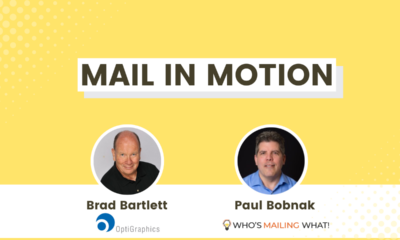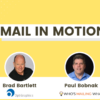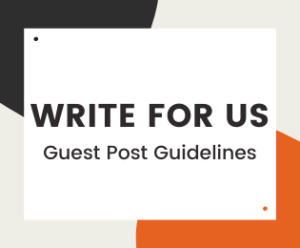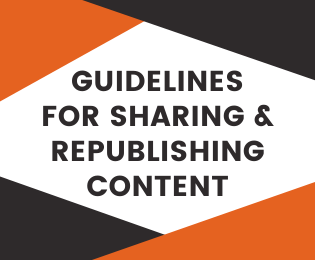HOW-TOS
How Direct Mail Captures Attention Amid Regional Awareness Campaigns
When urgency meets information overload, direct mail delivers clarity. For regional awareness campaigns facing time-sensitive issues, it’s not just effective—it’s essential. Tangible, targeted, and trusted, direct mail gets the message into the right hands when it matters most.
When local communities face pressing issues, whether environmental threats, health risks, or legal developments, regional awareness campaigns become crucial. These campaigns aim to inform and mobilize people quickly and clearly.
In an age where inboxes are flooded and social feeds are algorithm-driven, direct mail stands out as a surprisingly effective channel to deliver urgent, relevant messages straight into the hands of those who need them most.
Unlike digital ads that can be skipped or ignored, direct mail provides a physical reminder. It’s tactile, visible, and more likely to be seen by multiple members of a household. For regional awareness campaigns, this can mean the difference between someone taking timely action and staying uninformed.
In this article, we will explore how direct mail supports regional outreach efforts through precision targeting, compelling design, and timely delivery.
Regional Awareness Needs a Physical Touchpoint
Despite the dominance of digital communication, direct mail remains one of the most trusted mediums for public messaging. That trust becomes especially important during regional awareness efforts such as health alerts, class-action notices, environmental hazards, or local ballot measures. This is when people need reliable, understandable information delivered with authority.
What makes direct mail so effective in these moments? First, it avoids the noise. People are constantly bombarded with emails, push notifications, and targeted ads. Many of these are ignored or deleted without a second thought. But physical mail is different. It demands at least a few seconds of attention to scan and consider the message before making a decision.
Of course, the numbers around mail don’t look that great. According to Statista, the USPS had its peak in 2006 when the mail volume hit 213 billion units. Fast forward to 2024, mail volume has dropped to almost half that number (112.5 billion units). However, this doesn’t mean that mail has lost its value. On the contrary, direct mail has become more intentional and more noticeable in an increasingly digital world.
It provides a grounded, physical experience that digital media can’t match. This is particularly the case when you’re trying to capture attention around localized issues that matter deeply to the recipients.
Pinpointing the Right Neighborhoods and Households
One of the greatest strengths of direct mail in regional campaigns is its targeting precision. Unlike mass media, where a message is broadcast to a wide audience, direct mail allows you to zero in on exactly the neighborhoods or ZIP codes affected by a specific issue. This is especially critical when the campaign’s purpose is to raise awareness in areas experiencing unique local challenges.
Thanks to data-driven tools, marketers can now build extremely refined mailing lists based on geography, demographics, household type, income levels, or even past purchasing behavior. This means campaigns can focus their budget on reaching only those most likely to care and act.
A study published in PMC/National Library of Medicine on rural Every Door Direct Mail (EDDM) recruitment revealed a 2.7% response rate, exceeding expectations for geographically targeted outreach. This showcases how well-planned mailings can yield strong engagement, especially in areas where digital access or trust in online channels may be lower.
For context, after the firefighter foam lawsuit gained public attention, many legal service providers started to use direct mail to inform residents and the next-of-kin. This also happened to an extent during the Camp Lejeune water contamination situation, when residents on and around the Marine base were affected.
As TorHoerman Law notes, AFFF foam is often used on military bases, and servicemen are exposed to it during routine drills and training. Unfortunately, with how long AFFF has been in use, many of these individuals have already passed.
Finding email addresses for the family, particularly older members, to inform them of the compensation lawsuit can be near impossible. However, direct mailing them is far easier and more effective.
How to Effectively Design Direct Mail?
Designing a piece of direct mail for a regional awareness campaign requires walking a fine line between grabbing attention and maintaining trust. After all, the goal isn’t to shock or scare recipients, but to communicate urgency and relevance in a way that encourages thoughtful engagement.
Start with a headline that clearly states the issue. Use large fonts, strong contrasts, and straightforward language. For example: “Is Your Drinking Water Safe?” or “Important Legal Notice for Local Residents.” These types of headers immediately signal relevance to the recipient’s daily life.
As we mentioned earlier, the layout should be clean and scannable. Include key facts in bullet points and make calls to action stand out. These could include visiting a website, calling a hotline, or attending a local meeting. Trust-building design elements like maps, logos, seals, and testimonials can also add credibility. When done the right way, direct mail marketing can be incredibly effective.
As Forbes highlights, direct mail marketing had an ROI of 43% a few years ago. This is partly due to what David Villa, CEO of a marketing agency, calls “tradigital marketing.” He points out one unique example of it, which involves inserting scannable QR codes within direct mail. This kind of hybrid approach allows mailers to feel both modern and accessible.
Even if you choose to stay traditional, there’s a lot of time you can invest in strategy design. Oversized postcards are often more effective for awareness messages, while folded letters might work better when privacy or more detailed information is required. Ultimately, the message should feel like it was crafted for the recipient, not to broadcast them.
As Jon Beasley, technical director at Washington Direct Mail, explains, one of the biggest challenges marketers face is mastering personalization. He notes that while email marketing has an average open rate of 35.63%, it’s far higher with direct mail by up to 85%. All in all, designing direct mail can be a little challenging, but the results are clearly worth it.
Frequently Asked Questions
1. What is the meaning of direct mailing?
Direct mailing is when businesses send physical letters, postcards, or brochures straight to someone’s mailbox. It’s a more personal way to reach potential customers compared to emails or ads and can be great for getting attention in today’s digital-heavy world.
2. What is an example of direct mail marketing?
A pizza shop sending out discount coupons or a local gym mailing a free trial pass to nearby homes is a good example. It’s all about sending relevant offers or info straight to people, without relying on the internet or social media.
3. What is the purpose of an awareness campaign?
An awareness campaign is meant to spread the word about a cause, brand, or issue. The goal isn’t to sell something immediately, it’s to get people familiar with a message or idea so they recognize it and maybe act on it later.
All things considered, in a world saturated with fleeting digital content, direct mail remains a powerful and underused tool, especially for regional awareness campaigns. So, if your next campaign involves regional engagement, consider making direct mail your frontline channel. It delivers more than paper—it delivers trust, attention, and results.

































